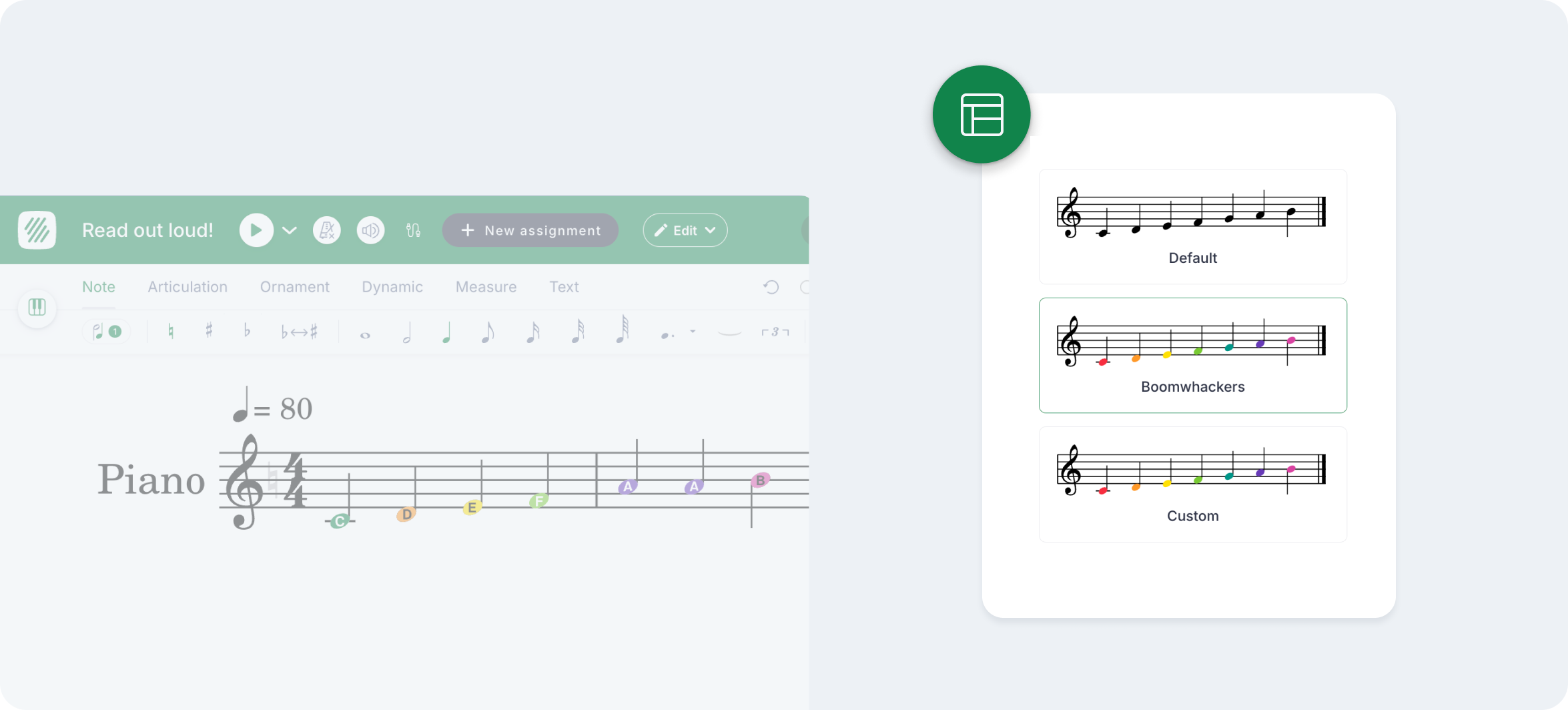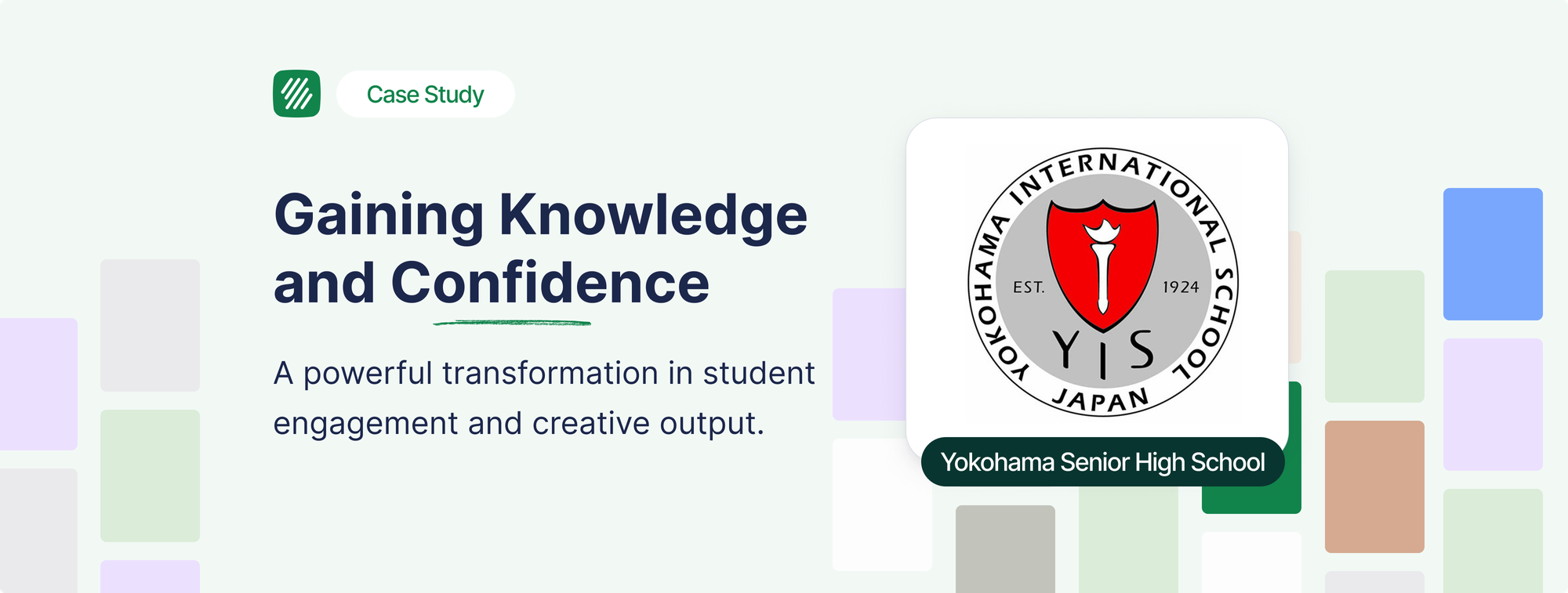At a Glance:
- Client: Ms. Akiko Fujii, a music teacher at Yokohama Senior High School of International Studies, Japan.
- Challenge: To engage a diverse student body with varying musical backgrounds in composition, a skill with traditionally high barriers to entry.
- Solution: Integrating Flat for Education's intuitive, cloud-based platform to facilitate composition, streamline assessments, and make music theory enjoyable.
- Key Results:
- Reduced lesson preparation and evaluation time by two-thirds.
- Helped students overcome their fear of composition, making it "fun."
- Made abstract concepts like music theory and solfège tangible through interactive worksheets and instant playback.
- Empowered students to create impressive, multi-instrument compositions and a portfolio of work they can be proud of.
The Client: Ms. Akiko Fujii, a Teacher with a Vision
At Yokohama Senior High School of International Studies, Ms. Akiko Fujii teaches music to a student body with incredibly diverse backgrounds, including many students who have returned from living abroad. This creates a wide variety of knowledge and experience levels, from students who have never read a note to those with years of experience on an instrument. Her goal was to find a tool that could meet every student where they are and empower them to create.
The Challenge: Overcoming the High Hurdles of Composition
As a vocal music teacher, Ms. Fujii understood the intimidation students felt at the start of creative activities. She identified several high hurdles in her music classes:
- Intimidating Composition: Many students could not read or write notes, making composition feel difficult and limited to a few capable students.
- Disengaged Theory: Lessons on solfège and music theory felt "boring," and students struggled to see the practical application of these concepts.
- Logistical Challenges: The use of paper-based assignments was time-consuming for both lesson preparation and evaluation.
- Remote Learning Gaps: The need for a solution that allowed for seamless, continuous learning, especially after COVID-19 made singing and in-person performance difficult.
The Solution: An Intuitive and Efficient Platform
Ms. Fujii found her solution in Flat for Education, which she chose for its seamless integration with Google Classroom and its intuitive design. She realized the software could solve a number of logistical and pedagogical problems all at once.
Making Composition Easy for Everyone
Flat for Education’s intuitive editor made a daunting task accessible. Students who didn't even know "do-re-mi" were able to start composing immediately. The platform's features, such as Boomwhackers and colored notes, made the process visual and fun. Ms. Fujii uses the toolset feature to limit the available functions for beginners, ensuring they are not overwhelmed and can gradually increase the difficulty of their assignments.

Transforming Theory with Interactive Worksheets
To make music theory enjoyable, Ms. Fujii began using Flat's worksheet feature. These assignments allowed her to create engaging exercises that students could work on in short, continuous periods, keeping them from getting bored. The combination of worksheets and short creative assignments helped students realize that they needed to understand theory to make better music, leading to a new, practical appreciation for it.
Streamlining Workflow and Saving Time
Using Flat for Education with Google Classroom has fundamentally changed Ms. Fujii's workflow. She can now collect and return assignments with a few clicks, saving her about two-thirds of the time she used to spend on paper-based tasks. The history feature allows her to track student progress, and she can provide targeted support to students who are struggling without interrupting the whole class.

The Results: Students Gaining Knowledge and Confidence
By implementing Flat for Education, Ms. Fujii saw a powerful transformation in her students' engagement and their creative output.
- Increased Engagement: Students work silently and intently in class, and the time from understanding to enjoying composition became "remarkably short." They have created impressive, multi-instrument compositions and even background music for picture books.
- Student Empowerment: The platform empowers students to experiment and learn through "trial and error." Students who were once hesitant about music became confident enough to express their feelings in their compositions.
- A New Approach to Assessment: The ability for students to compare and analyze each other's work through the musical score allows for "clearer instruction" and a deeper understanding of why music has a certain effect.
- Valuing Themselves: As students put time and effort into their works, they develop a sense of attachment and accomplishment. This allows them to express their thoughts with confidence, which Ms. Fujii believes helps them "value themselves."

Conclusion: A New Standard for Music Education
Ms. Akiko Fujii's story proves that Flat for Education is not just a tool; it's a platform for educational transformation. By embracing a modern, cloud-based approach, she has overcome the traditional hurdles of music education and created an environment where every student, regardless of their background, can become a confident and creative musician.

Musically Yours,
Flat for Education
Many thanks to Ms. Fujii for sharing her valuable experiences with us. Her story proves that a cloud-based approach can fundamentally transform a curriculum, empowering students to overcome intimidation and embrace composition.
